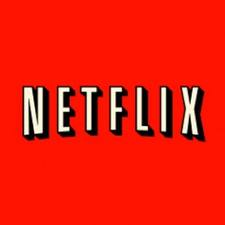 Groans and moans over product tying (aka bundling) are commonplace. When companies sell products as a package deal only, consumers frequently feel they’re getting the short end of the stick because they’re being “forced” to purchase products they don’t want. The classic example is cable television. The sports fan only wants to watch ESPN and so complains, “I’m forced to pay for all these other channels.” Another classic example is the Microsoft Office Suite for the people who really only use Word but can only purchase Word if they buy Excel and Access too.
Groans and moans over product tying (aka bundling) are commonplace. When companies sell products as a package deal only, consumers frequently feel they’re getting the short end of the stick because they’re being “forced” to purchase products they don’t want. The classic example is cable television. The sports fan only wants to watch ESPN and so complains, “I’m forced to pay for all these other channels.” Another classic example is the Microsoft Office Suite for the people who really only use Word but can only purchase Word if they buy Excel and Access too.
Netflix has traditionally bundled its DVD and instant streaming services. However, yesterday Netflix announced a new pricing plan that separates its DVD and instant streaming services into two separate packages, with no option for a discounted combined package. A Netflix customer could previously purchase the streaming only option for $8 per month. Tacking on the one-DVD-at-a-time option increased the price to about $10 per month. Netflix did not previously offer a DVD-only option.
Despite all the historical complaining over product-tying, I have not encountered a headline yet that spins Netflix’s move (the opposite of product tying) as serving consumer interests. The outrage over what consumers see as a massive price increase should give some pause in light of how product tying has traditionally been viewed. Blog comments on Netflix’s move are entertaining. A few of them follow:
…this is just yet another way to choke more change out of your customers…. I mean… are you guys really that strapped for cash? or are you just greedy? ALSO, what a great way to treat you long term customers, we REALLY appreciate it…i can understand you applying it to new customers… but please, explain to me who’s brilliant idea this was… I hear it going like this ” Hey I have an idea of how we can show appreciation to our long term valued customers…. let’s take MORE of their money, that way they REALLY feel valued!”….IDIOTS.
Scott Fagaly, Olive Branch, Mississippi
You’ve decided to raise customer rates during a period of economic downturn, when people are struggling to pay for basic necessities and when cable tv is just too damned expensive. You’re forcing me to pay more for products and services I’ve paid for loyally for quite a while now. You’re really, REALLY making me reconsider this business relationship.
Darrin Wright, News Reporter at Zimmer Radio Group
I have had my account more than a decade and I must confess I feel very much taken for granted right now.
Travis McClain
Netflix’s pricing move is a surprise. Although a price increase on a popular service is not a shocker, eliminating a combined DVD/Streaming option was unexpected. I’m not surprised that Netflix is offering its products as a menu, since they started moving this direction last fall with its streaming only option.
Tying generally allows a company to extract more value by combining two products that different consumers value differently. A simple example has two products and two consumers. Suppose that Jack values DVDs at $8 and streaming at $4. Jill has just the opposite values (DVDs at $4 and streaming at $8). If the company in this example does not offer a bundled package, it could make $16 in sales by charging $8 for for DVDs and $8 for Streaming. Jack would buy DVDs and Jill would buy Streaming. However, if it offered a bundled package, $12 for both DVDs and Streaming, the company would make $24, a substantial increase in its sales. This is what makes Netflix’s move a surprise.
Based on its massive collection of consumer data, Netflix must have concluded that consumers fall into two camps: (i) those who place no incremental value on an additional service (they either like DVDs or they like streaming, but not both), and (ii) those who place so much incremental value on additional the additional service that no discount is needed to entice the purchase. Without access to Netflix’s data, which may reveal differently, I find this implausible. I suspect that Netflix is missing out on substantial revenues from those who would purchase an additional service at a discounted price.
Furthermore, I suspect that Netflix’s view of which service is the “add-on” is turned on its head. The official Netflix blog indicates that Netflix views streaming as the primary service and DVD’s as the add on. The blog states:
Last November when we launched our $7.99 unlimited streaming plan, DVDs by mail was treated as a $2 add on to our unlimited streaming plan.
My guess is that most consumers see DVDs as the primary service since they are able to view new releases and sample from a vast library. For them, the streaming service is the $2 tack-on since the library is limited and accessed only during those “bored out my mind moments” when older films such as “Lawrence of Arabia” still are not interesting, but hey, it’s something to watch.
Without the bundled option, many consumers will opt for either DVDs or streaming, but not both. However, these consumers would gladly purchase the additional service at a discount. Why wouldn’t Netflix offer the individual services in addition to packaged options? My guess is their only motivation is to avoid a pricing plan that looks like a menu at a Mexican restaurant. Every possible combination of tacos, enchiladas, tortas, and chile rellenos does become confusing.
